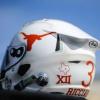
Petition to shrink the cars
#1

Posted 15 September 2020 - 13:55
Todays cars are too big. It is safety problem because they create more inertia and impacts are much stronger
Second it is ecological issue too. Bigger car needs Bigger garage, bigger trailer and cranes. Bigger transporter. Bigger transporter uses more fuel.
Bigger cars needs bigger tracks. Bigger tracks use more land. More trees have to be cut.
A fine track such as Mugello cannot host an F1 race without problems simply because cars are too big.
Etc, etc
In todays day and age the challenge has to be to make small but equally fast and safe cars.
So before the new rules are finalise can we as a fans write some letter to FIA and ask that maximum length of the car has to be defined in the new rulebook
Advertisement
#2

Posted 15 September 2020 - 14:03
In the other topic a question was raised about the size of the cars.
Todays cars are too big. It is safety problem because they create more inertia and impacts are much stronger
Second it is ecological issue too. Bigger car needs Bigger garage, bigger trailer and cranes. Bigger transporter. Bigger transporter uses more fuel.
Bigger cars needs bigger tracks. Bigger tracks use more land. More trees have to be cut.
A fine track such as Mugello cannot host an F1 race without problems simply because cars are too big.
Etc, etc
In todays day and age the challenge has to be to make small but equally fast and safe cars.
So before the new rules are finalise can we as a fans write some letter to FIA and ask that maximum length of the car has to be defined in the new rulebook
Respectfully I think you need to brush up on your physics. Inertia is the tendency of things to not move from stationary unless force is applied. "Impact strength" is related to kinetic energy and has nothing to do with the physical dimensions of the car, but is a function of a car's mass and velocity, with velocity being a much greater factor. There are all sorts of questions over your other reasoning as well.
Edited by DukeSpecial, 15 September 2020 - 14:04.
#3

Posted 15 September 2020 - 14:05
It is not normal for F1 to need red flags for damaged barriers and we just had two in two weekends. These cars are too large and heavy, which is a safety issue in its own, but it’s also a problem to racing as they overgrow most of the best circuits.
Of course it’s stupid that F1’s green cars are the racing equivalent of high end SUVs.
Edited by Atreiu, 15 September 2020 - 14:05.
#4

Posted 15 September 2020 - 14:05
bigger cars also means bigger chance thay they touch each other and less space to overtake
On Mugello you are wrong since last weekend has shown that they can host a great F1 race, there was more overtaking as anyone expected, the drivers also absolutely adored the track (so did the fans, including me) and the safety issues weren't a real problem (Hamilton had expressed concern before the weekend but now says the track is safe enough) and the sand / gravel traps provide that mistakes have a consequence.
The re-start crash could have happened on any track and had nothing to do with Mugello specifically.
#5

Posted 15 September 2020 - 14:06
The batteries weigh more than an anvil, until we have a new kind of PU the cars will be big and heavy.
#6

Posted 15 September 2020 - 14:07
#7

Posted 15 September 2020 - 14:08
Are we talking mass or dimensions here?
OP referred to length, so I assumed they were talking about dimensions.
#8

Posted 15 September 2020 - 14:08
Are we talking mass or dimensions here?
I’d like both to be reduced.
#9

Posted 15 September 2020 - 14:09
Dimensions that we had in a period 1993-1997 were perfect.
#10

Posted 15 September 2020 - 14:10
Are we talking mass or dimensions here?
Both
#11

Posted 15 September 2020 - 14:10
Todays civil cars are too big too. And it is an issue in itself. But they need to be big because modern people are obese thus need bigger vehicles. F1 drivers are not obese, not even Juan Montoya. So they do not need big cars for that reasons.
Dimensions that we had in a period 1993-1997 were perfect.
Where do you get these 'facts' from?
#12

Posted 15 September 2020 - 14:13
bigger cars also means bigger chance thay they touch each other and less space to overtake
On Mugello you are wrong since last weekend has shown that they can host a great F1 race, there was more overtaking as anyone expected, the drivers also absolutely adored the track (so did the fans, including me) and the safety issues weren't a real problem (Hamilton had expressed concern before the weekend but now says the track is safe enough) and the sand / gravel traps provide that mistakes have a consequence.
The re-start crash could have happened on any track and had nothing to do with Mugello specifically.
Mugello race was not great. It was wreckfest. Demolition derby.
It has nothing to do with racing.
#13

Posted 15 September 2020 - 14:14
Dimensions that we had in a period 1993-1997 were perfect.
That's a classic case of rose-tinted specs though. I loved what I considered to be the nimble rockets of 1990-93 and thought the cars of 96-97 looked too long and cumbersome. Talk to a fan from the 1950s and 1960s and anything since then is considered truck-like in comparison.
#14

Posted 15 September 2020 - 14:15
Where do you get these 'facts' from?
Observation
#15

Posted 15 September 2020 - 14:16
I don't remember changing the tracks, garages, or transporter size when these Big Cars came along. Did I miss something?
#16

Posted 15 September 2020 - 14:18
That's a classic case of rose-tinted specs though. I loved what I considered to be the nimble rockets of 1990-93 and thought the cars of 96-97 looked too long and cumbersome. Talk to a fan from the 1950s and 1960s and anything since then is considered truck-like in comparison.
Dimensions changed after 1992 and after 1997
So cars from 1996 and 1997 had exactly the same dimensions (aparat from rear wing height) as the 1993 and 1994 cars
#17

Posted 15 September 2020 - 14:20
I don't remember changing the tracks, garages, or transporter size when these Big Cars came along. Did I miss something?
Garages at places such as Yas Marina, Bahrain etc are double the size of the garages that Brands Hatch or Kyalami have
#18

Posted 15 September 2020 - 14:21
#19

Posted 15 September 2020 - 14:23
We've had these cars since 2014, with the extra dimensions starting in 2017. When you say Big Cars, when do you think that started?
And size isn't the issue with tracks, but laptimes. They outgrew the tracks in speed.
Advertisement
#20

Posted 15 September 2020 - 14:23
Dimensions changed after 1992 and after 1997
So cars from 1996 and 1997 had exactly the same dimensions (aparat from rear wing height) as the 1993 and 1994 cars
Is that so? The design made them look larger and less nimble. I hated the 96 and 97 Williams shape, for example, but their 93 and 94 cars looked well-proportioned and nimble.
My personal favourites are the 1990 Ferrari, the 1991 McLaren and the 1991 Jordan. Beautiful cars that also looked fast.
#21

Posted 15 September 2020 - 14:25
We've had these cars since 2014, with the extra dimensions starting in 2017. When you say Big Cars, when do you think that started?
And size isn't the issue with tracks, but laptimes. They outgrew the tracks in speed.
Each year they grow bigger and bigger. Simply because overall length is not mandated by the rulebook. It is completely free from any rule. You can build 30ft car if you wish
#22

Posted 15 September 2020 - 14:25
So before the new rules are finalise can we as a fans write some letter to FIA and ask that maximum length of the car has to be defined in the new rulebook
I think the maximum length is already defined in the new rules. The problem is, it's set basically at what the cars measure right now if I remember correctly.
I do agree that it's a big problem.
Edited by Anja, 15 September 2020 - 14:26.
#23

Posted 15 September 2020 - 14:29
Fuel cell size can force two stops (if wanted), cars can be smaller/lighter; both of which would allow the drivers to run the tires harder over the a stint.
#24

Posted 15 September 2020 - 14:29
Respectfully I think you need to brush up on your physics. Inertia is the tendency of things to not move from stationary unless force is applied. "Impact strength" is related to kinetic energy and has nothing to do with the physical dimensions of the car, but is a function of a car's mass and velocity, with velocity being a much greater factor. There are all sorts of questions over your other reasoning as well.
When I wrote inertia I meant kinetic energy
Im not british, so it is simply lingvistic issue
#25

Posted 15 September 2020 - 14:29
Are we talking mass or dimensions here?
The greater the mass, the greater the wheelbase needed to go zoom.
#26

Posted 15 September 2020 - 14:32
Car size won't change until the current engine regulations move to something else and IIRC that isn't until 2025 at the earliest.
#27

Posted 15 September 2020 - 14:33
Respectfully I think you need to brush up on your physics. Inertia is the tendency of things to not move from stationary unless force is applied. "Impact strength" is related to kinetic energy and has nothing to do with the physical dimensions of the car, but is a function of a car's mass and velocity, with velocity being a much greater factor. There are all sorts of questions over your other reasoning as well.
Close, but no cigar...
Inertia is the resistance of any physical object to any change in its velocity.
#28

Posted 15 September 2020 - 14:34
#29

Posted 15 September 2020 - 14:34
Each year they grow bigger and bigger.
How much have they grown year on year since 2017? That's the last time the car dimensions were changed by the rules.
The current cars are pretty big, it's shocking when you see them compared to like an early 00s car side by side in a museum. But an F1 car has been too fast for Brands Hatch since...I dunno...30 years ago?
#30

Posted 15 September 2020 - 14:35
To me, it started back in 2010 when they banned refueling. They had to build bigger fuel tanks to last the entire race.
However, despite having a smaller fuel tank as a result of the change of regulations, the 2014 remained just as long. It seems that the teams figured that a longer car would be a more aerodynamically efficient solution (as well as being more stable and easier to drive). Then in 2017 they became wider.
It may seem counter intuitive, but a bigger and heavier car is actually safer (at least for the drivers). In the event of a crash, the energy must go through all that mass before reaching the driver. It''s the same reason for having bigger road cars nowadays. The bigger dimensions serve as a form of padding to protect the passengers.
Personally, I would like to go back to pre-2010 dimensions. However, I doubt it will happen.
Edited by dierome87, 15 September 2020 - 14:41.
#31

Posted 15 September 2020 - 14:36
The cars aren't too big. We're talking about centimeters here. It's not a big deal. People hung up on the aesthetics of the cars confuse me. They're longer, sure, but who really cares? The bigger dimensions gives them more space for things like the energy stores, and provides more downforce due to greater surface area of the floor. I like the cars being faster, personally. It's all the fiddly bits up front that hamper overtaking. Luckily, that will be addressed in 2022.
As far as safety is concerned, the speed of the cars is probably the main thing. I don't know if shortening the cars will less their mass by any considerable amount, as you're talking about mostly carbon fiber at the extremities. A lot of the mass is required to make the car go. So the amount of energy dissipated in a crash is always going to be high. If you want to keep barriers safe, pave more of the runoff. In most scenarios, you'll scrub more speed on pavement than on gravel/grass. Even better, add that friction paint that they have at Paul Ricard. Then, invest in new barrier technology that can spread out impact energy better, while retaining integrity. I don't think circuits or fans want any or all of these changes, so I'm not sure we're not just manufacturing a problem here.
Mugello would not have been approved in any normal racing year. It doesn't seem to meet the stringent requirements of most modern circuits we usually have on the calendar. I wouldn't use that track as any benchmark for what is safe and what isn't safe. It was added to the calendar out of necessity, but probably won't see a return without some major upgrades. There are lots of classic circuits I love, that I fully understand aren't up to snuff with modern standards. Road America probably couldn't host an F1 race, for example, and I'm fine with that. Neither could Laguna Seca. It is what it is. Modern circuits have safety features built into them that compliment the safety features built into modern F1 cars. They allow us to take for granted how safe the sport has become, so that when Stroll has a scary off at a less safe circuit, we realize just how good of a job the modern circuits have done at keeping the participants safe. Leclerc had a similarly scary off at Monza just a week before, and didn't come away nearly as rattled as Lance, and the car wasn't a write-off either.
#32

Posted 15 September 2020 - 14:37
Another major drawback of the larger, heavier cars that I haven't seen mentioned yet here is the crap handling at slow speeds and their remarkable tendency to snap irretrievably. This has been a talking point the last couple of races with the Sky crew, and deservedly so, imho.
#33

Posted 15 September 2020 - 14:39
Is that so? The design made them look larger and less nimble. I hated the 96 and 97 Williams shape, for example, but their 93 and 94 cars looked well-proportioned and nimble.
My personal favourites are the 1990 Ferrari, the 1991 McLaren and the 1991 Jordan. Beautiful cars that also looked fast.
Looks can be deceiving, as the bigger cars are considerably faster and more agile.
#34

Posted 15 September 2020 - 14:39
The cars aren't too big. We're talking about centimeters here.
We are talking 0.8-1m longer and 0.3m wider since 2010... That's a lot!
Like I've said earlier, the 2020 F1 cars are as long/longer than Rolls-Royce Ghost Long Wheelbase. The 2020 F1 cars would push the top 5 list of longest consumer road vehicles in mass production today (not counting trucks). That's huge.
Edited by Myrvold, 15 September 2020 - 14:42.
#35

Posted 15 September 2020 - 14:40
Mugello would not have been approved in any normal racing year. It doesn't seem to meet the stringent requirements of most modern circuits we usually have on the calendar.
It already had the FIA Grade 1 before this year. That means it was deemed good enough to potentially host an F1 race at any given time.
Unless you suggest that the FIA makes up their rules and standards as they go along...
#36

Posted 15 September 2020 - 14:40
Another major drawback of the larger, heavier cars that I haven't seen mentioned yet here is the crap handling at slow speeds and their remarkable tendency to snap irretrievably. This has been a talking point the last couple of races with the Sky crew, and deservedly so, imho.
I think a lot of that is aerodynamics. Every year the cars go faster. The % of the grip that comes from the wings gets bigger and bigger and bigger. Aero doesn't like being sideways.
#37

Posted 15 September 2020 - 14:40
#38

Posted 15 September 2020 - 14:41
Another major drawback of the larger, heavier cars that I haven't seen mentioned yet here is the crap handling at slow speeds and their remarkable tendency to snap irretrievably. This has been a talking point the last couple of races with the Sky crew, and deservedly so, imho.
Snap oversteer is probably a function of the much higher apex speeds, and slick tires. This was something discussed when grooved tires were first introduced, and then again when they were retired. The grip curve at the limit is much smoother for grooved tires than slicks. Slicks have grip, and then they suddenly don't. Grooved tires have a window where you can still save the car, and were supposedly much easier to drive on the limit.
#39

Posted 15 September 2020 - 14:42
The cars aren't too big. We're talking about centimeters here. It's not a big deal. People hung up on the aesthetics of the cars confuse me. They're longer, sure, but who really cares? The bigger dimensions gives them more space for things like the energy stores, and provides more downforce due to greater surface area of the floor. I like the cars being faster, personally. It's all the fiddly bits up front that hamper overtaking. Luckily, that will be addressed in 2022.
As far as safety is concerned, the speed of the cars is probably the main thing. I don't know if shortening the cars will less their mass by any considerable amount, as you're talking about mostly carbon fiber at the extremities. A lot of the mass is required to make the car go. So the amount of energy dissipated in a crash is always going to be high. If you want to keep barriers safe, pave more of the runoff. In most scenarios, you'll scrub more speed on pavement than on gravel/grass. Even better, add that friction paint that they have at Paul Ricard. Then, invest in new barrier technology that can spread out impact energy better, while retaining integrity. I don't think circuits or fans want any or all of these changes, so I'm not sure we're not just manufacturing a problem here.
Mugello would not have been approved in any normal racing year. It doesn't seem to meet the stringent requirements of most modern circuits we usually have on the calendar. I wouldn't use that track as any benchmark for what is safe and what isn't safe. It was added to the calendar out of necessity, but probably won't see a return without some major upgrades. There are lots of classic circuits I love, that I fully understand aren't up to snuff with modern standards. Road America probably couldn't host an F1 race, for example, and I'm fine with that. Neither could Laguna Seca. It is what it is. Modern circuits have safety features built into them that compliment the safety features built into modern F1 cars. They allow us to take for granted how safe the sport has become, so that when Stroll has a scary off at a less safe circuit, we realize just how good of a job the modern circuits have done at keeping the participants safe. Leclerc had a similarly scary off at Monza just a week before, and didn't come away nearly as rattled as Lance, and the car wasn't a write-off either.
We are not talking about centimeters
They are double the size of the mid 00s cars
Advertisement
#40

Posted 15 September 2020 - 14:42
It already had the FIA Grade 1 before this year. That means it was deemed good enough to potentially host an F1 race at any given time.
Unless you suggest that the FIA makes up their rules and standards as they go along...
No, I was not aware of that. Was this recent? My memory is notoriously bad, so I remember the last time Mugello came up before this year, it was supposedly not up to snuff. Maybe I'm mixing it up with Imola.
#41

Posted 15 September 2020 - 14:42
Close, but no cigar...
Inertia is the resistance of any physical object to any change in its velocity.
Correct. I was trying to spell it out a bit to differentiate it from kinetic energy but you're right, my definition didn't encompass existing motion.
#42

Posted 15 September 2020 - 14:43
And inability to race in the rain. Bigger car aquaplanes sooner than smaller cae
What, with more pressure going through the tread?
#43

Posted 15 September 2020 - 14:45
Snap oversteer is probably a function of the much higher apex speeds, and slick tires. This was something discussed when grooved tires were first introduced, and then again when they were retired. The grip curve at the limit is much smoother for grooved tires than slicks. Slicks have grip, and then they suddenly don't. Grooved tires have a window where you can still save the car, and were supposedly much easier to drive on the limit.
The cars were very very twitchy in the grooved tire era, but they usually got back into shape after breaking grip.
#44

Posted 15 September 2020 - 14:47
We are talking 0.8-1m longer and 0.3m wider since 2010... That's a lot!
Like I've said earlier, the 2020 F1 cars are as long/longer than Rolls-Royce Ghost Long Wheelbase. The 2020 F1 cars would push the top 5 list of longest consumer road vehicles in mass production today (not counting trucks). That's huge.
Yep. It's a lot.
And how much have they grown since, say, 1992?
#45

Posted 15 September 2020 - 14:50
We are talking 0.8-1m longer and 0.3m wider since 2010... That's a lot!
Like I've said earlier, the 2020 F1 cars are as long/longer than Rolls-Royce Ghost Long Wheelbase. The 2020 F1 cars would push the top 5 list of longest consumer road vehicles in mass production today (not counting trucks). That's huge.
We are not talking about centimeters
They are double the size of the mid 00s cars
Is this supposed to constitute a big difference in length? Circuits and braking zones are bigger than this. All that matters to me is the racing, and we're not talking a matter of 0.8-1m difference here. We're talking about car not even able to get close enough to pull alongside, much less make the move stick. I don't care to rearrange deck chairs for appearance's sake. Slowing the cars by making them shorter, while still ending up with the same overtaking issue is a step backwards.
#46

Posted 15 September 2020 - 14:50
I think a lot of that is aerodynamics. Every year the cars go faster. The % of the grip that comes from the wings gets bigger and bigger and bigger. Aero doesn't like being sideways.
I think that's a factor, but I think it was Ant over the past weekend giving a very cogent explanation as to how the weight was a big factor in these snap spins at low speeds, where even today's aero can't compensate for the crazy weight.
#47

Posted 15 September 2020 - 14:51
No, I was not aware of that. Was this recent? My memory is notoriously bad, so I remember the last time Mugello came up before this year, it was supposedly not up to snuff. Maybe I'm mixing it up with Imola.
I don't have the exact data but I'm pretty sure it has been the case for years, for example I've found the circuit list from December 2018 and it's already there.
#48

Posted 15 September 2020 - 14:52
Yep. It's a lot.
And how much have they grown since, say, 1992?
I stood next to Gilles' Ferrari 312T5 on display at the Montreal race many years back, it was about the size of a child's bunk bed. There's a reason why so many wrecks were fatal in that era.
#49

Posted 15 September 2020 - 14:52
Snap oversteer is probably a function of the much higher apex speeds, and slick tires. This was something discussed when grooved tires were first introduced, and then again when they were retired. The grip curve at the limit is much smoother for grooved tires than slicks. Slicks have grip, and then they suddenly don't. Grooved tires have a window where you can still save the car, and were supposedly much easier to drive on the limit.
Maybe, but it's been a long time since we had grooved tires, and these cars are notably more snap-prone than they were even 3 or 4 years ago.
#50

Posted 15 September 2020 - 14:52
Is this supposed to constitute a big difference in length? Circuits and braking zones are bigger than this. All that matters to me is the racing, and we're not talking a matter of 0.8-1m difference here. We're talking about car not even able to get close enough to pull alongside, much less make the move stick. I don't care to rearrange deck chairs for appearance's sake. Slowing the cars by making them shorter, while still ending up with the same overtaking issue is a step backwards.
The bigger the car/tires, the more dirty air it produces.






















